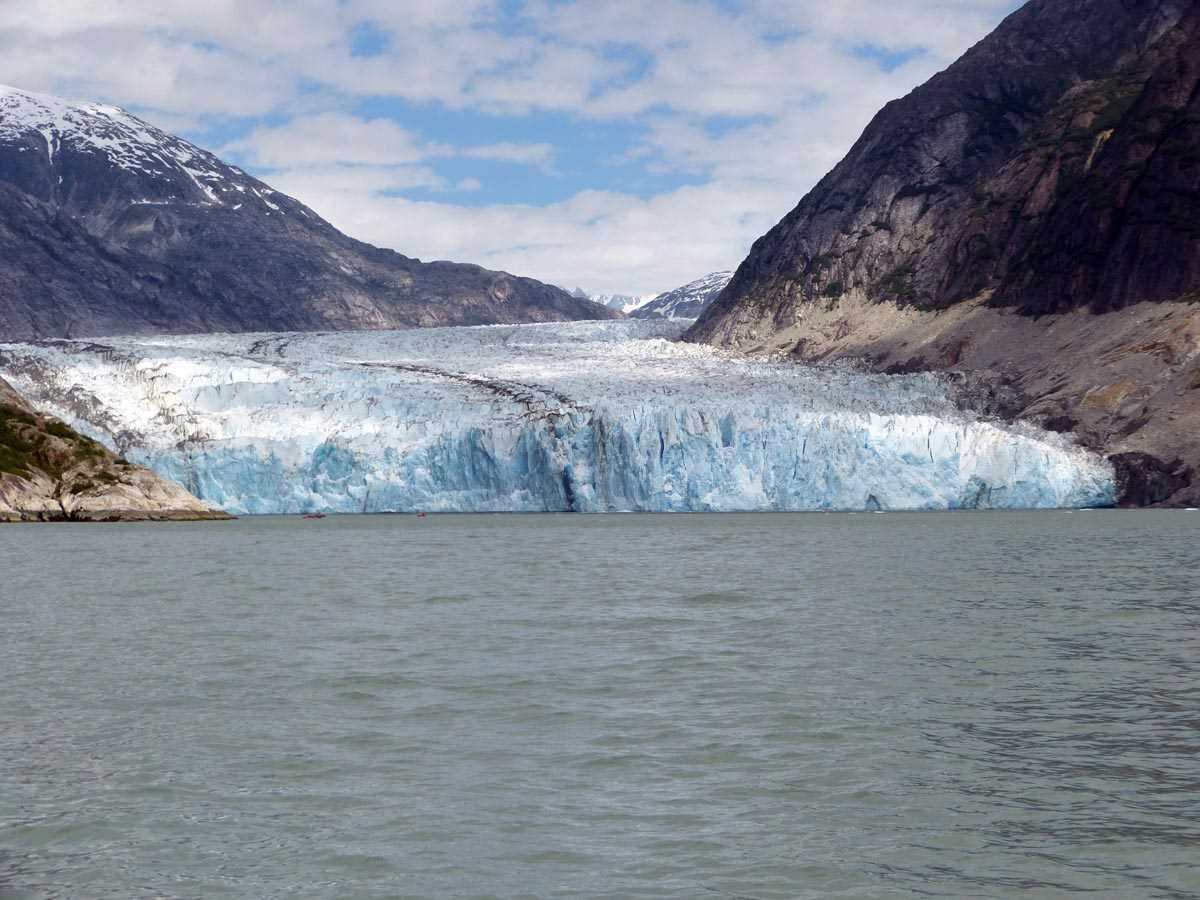Could there be a better beginning to a voyage through the temperate rain forest of Southeast Alaska? I doubt it. We left Alaska’s capital city of Juneau last night to travel through the calm water of Stephens Passage. Singly and in pairs, we gathered on the foredeck of National Geographic Sea Bird to greet the morning.
As the morning coffee cleared our vision, we spotted erect puffs of mist, the spouts of humpback whales. Many of the puffs were in pairs, the larger spout of a forty-ton adult female and the smaller, more frequent spouts of her calf, born just last winter in the warmer water of Hawaii. The winter in Hawaii is for breeding; the summer in Alaska is for feeding. We see the behemoths as they rise to the surface to restore the oxygen in their tissues with a series of audible breaths, and then they dive in search of their prey, either krill or small schooling fish. And all of this before breakfast!
Our ship turned to enter the fjord complex of the Tracy Arm - Ford's Terror Wilderness area. Most of the land of Southeast Alaska comprises the Tongass National Forest. At about 17 million acres, it is the largest unit of the U.S. Forest System. It is managed under the concept of multiple-use. This particular area of the Tongass is protected for its wilderness value. Two long fjords, Tracy Arm and Endicott Arm, cut into the mainland of Alaska, almost reaching the border with Canada. We chose Endicott Arm. A fjord in a glacially-carved valley, now flooded by the sea. Steep, nearly vertical walls rise to a height of 1,200 or so feet on either side. Forest of Sitka spruce and Western hemlock clings to the rock. It is a landscape of breathtaking beauty.
As we moved up the fjord, we began to see pieces of ice floating in the water, icebergs of varying sizes. One more turn, and at the head of Endicott Arm we found their source: the remnant of the glacier that once filled the valley and carved this fjord, the Dawes Glacier. It is one of Alaska's tidewater glaciers; that is, it drops its ice directly into the sea. A glacier might look static but actually, it is quite dynamic, ice moving downhill under the force of gravity until it falls off the snout and into the sea in the process that we call calving. Alaskan glaciers might move four to six feet downhill each day. In recent years, with the effects of a warming sea, the loss of ice through melting and calving is exceeding the annual addition of new ice and the glacial face is retreating, leaving bare, unvegetated rock where, not too many years ago, there was ice. We boarded our landing craft to approach the face of the glacier. We drifted and watched, hoping it would drop a load of ice, and we were well rewarded. We could hear the snaps, pops, and groans of ice moving over underlying rock, and then, with a massive crash, tons of ice dropped into the sea. Harbor seals use the floating ice as a platform to give birth to their single pup. We were careful to give them wide berth in this most critical part of their annual cycle.
For those of us who spend our lives in more developed parts of the world, it was a magnificent introduction to the wildness that is Alaska.









